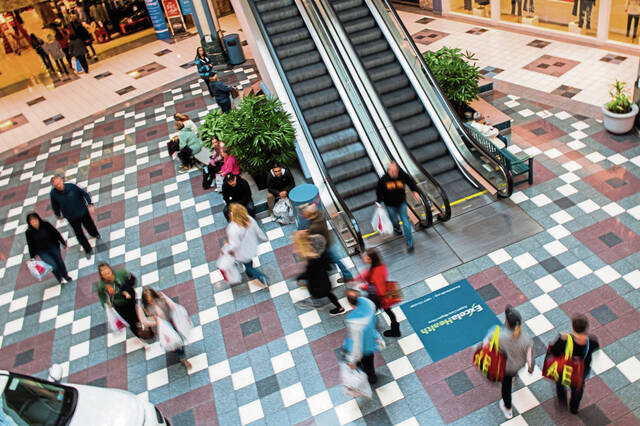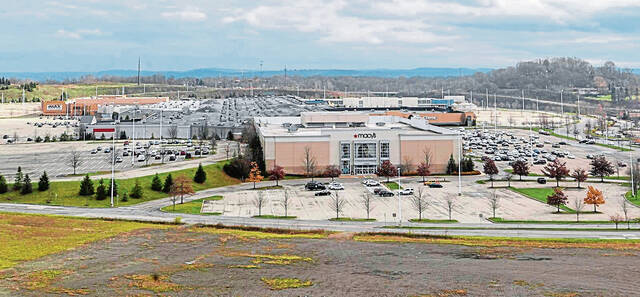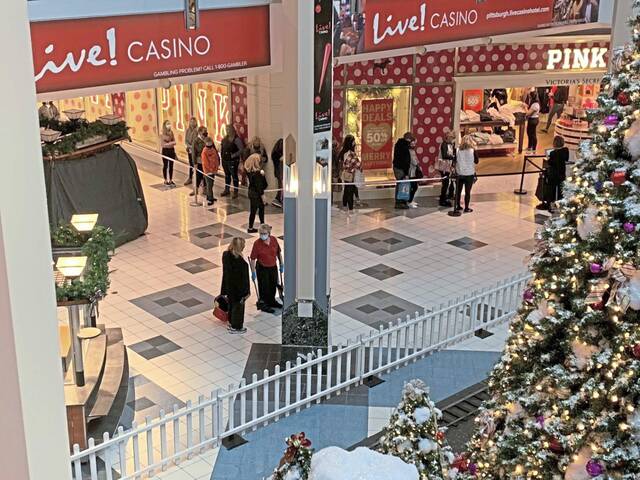Black Friday loses luster with retailers' earlier push to maximize holiday sales
Black Friday isn’t what it used to be.
That, of course, won’t stop sisters Jenna and Jamie Fratangelo of Scottdale.
They’ll have Thanksgiving dinner with their family, get their five children ready for bed, plot their game plan and then head out before sunrise to spend the day shopping for sales and bargains.
“It’s something the two of us do every year,” Jenna said. “We will come home with something because we will still go out looking for great deals.”
Increasingly, and perhaps earlier than ever this year, those deals can be found before Black Friday, industry analysts said.
What used to be considered the official start of the holiday shopping season has been watered down because of earlier “Black Friday” deals. Supply chain issues also have created a sense of urgency to buy a product now and not wait.
“It used to be the first day to get the item on sale was actually on Black Friday,” said Marshal Cohen, chief industry advisor of The NPD Group Inc., a market research company that studies consumer behavior and the retail industry. “And then it was one day early on Thanksgiving, and then it became a few days early, and then a month early. This year, it has been the earliest ever.”
Some retailers such as Target and Amazon began offering “Black Friday” deals in October.
The trend of retailers pushing such sales earlier has changed the complexion of what once was the biggest — and certainly the most anticipated — shopping day of the year.
“You won’t have those crazy long lines and the mad dash to run into the stores once they open that we have seen in years past, “ Cohen said.
This year’s Black Friday sales likely won’t be as enticing as previous years’, said Steve Siebold, a certified financial educator and co-author of “How Money Works.”
Siebold said supply chain issues aren’t going away anytime soon — causing limited supplies — and rising fuel costs will be passed on to shoppers in the form of higher prices.
“What we may be able to get, we may have to overpay for it because it’s in short supply,” Siebold said. “Don’t get swept up in the emotion of advertisements and the feel-good of the holiday season. My advice is to be conservative and make a budget.”
This likely will be a challenging holiday shopping season for consumers and retailers, said Rob Handfield, a professor of supply chain management at North Carolina State University.
“I think stores won’t have as many products on the shelf as in past years for Black Friday,” he said. “There will be a lot of empty shelves after Black Friday because stores won’t order more items or as many items as they have in the past because they probably won’t arrive in time because of supply chain issues.”
The trend of earlier Black Friday shopping has been building for years, said Audrey Guskey, professor of marketing at Duquesne University who has studied holiday trends for more than 30 years.
“You are not going to see those big doorbusters (sales) like we’ve seen in the past,” she said.
Online impact
Jenna Fratangelo said her and her sister’s strategy has shifted somewhat compared to previous years.
“This year, we’ve already done more online shopping than we usually do,” she said. That’s because they noticed some store shelves empty and were worried they wouldn’t get things their children wanted.
“I also couldn’t pass up the good early sales,” she said.
They are not alone.
Last year saw extraordinary growth in digital channels as consumers turned to online shopping to meet their holiday needs during the pandemic, according to the National Retail Federation, the world’s largest retail trade association.
Online and other nonstore sales are forecast to increase between 11% and 15% this year to between $218.3 billion and $226.2 billion, according to the National Retail Federation. That number is up from $196.7 billion in 2020.
Online shopping can have its drawbacks, Jenna Fratangelo said.
She and her sister historically have been hesitant to buy online first because there could be better in-store deals on Black Friday, she said.
Also, there is the risk of overbuying when they shop online first because of the possibility of forgetting about items already purchased.
And, of course, buying online removes the social aspect of the Black Friday rush.
Significance of Black Friday
Despite supply chain disruptions, businesses are poised to have a potentially record-setting holiday shopping season, according to the retail federation.
Sales during November and December are expected to grow between 8.5% and 10.5% from a year ago to between $843.4 billion and $859 billion.
And while e-commerce will remain important, households are expected to shift back to in-store shopping and a more traditional holiday shopping experience this year, according to the federation.
“There is considerable momentum heading into the holiday shopping season,” said Matthew Shay, president and CEO of the National Retail Federation.
Shay said consumers are in a favorable position going into the last weeks of the year as income is rising and household balance sheets are strong.
Indeed, the U.S. Commerce Department reported last week that retail sales rose a seasonally adjusted 1.7% in October from September. Pay raises and healthy savings for many households are credited with contributing to consumers’ willingness to spend, the department said.
Shema Krinsky, area director of marketing for Ross Park Mall and South Hills Village, said it is too soon to project sales or shoppers, but the malls are seeing an influx of Santa photo reservations and full parking lots.
“(That) is always a good sign and indicator of a busy holiday shopping season,” she said. “We expect Black Friday shoppers will come out in droves.”
As for the Fratangelo sisters, they plan to visit Westmoreland Mall and stores such as Kohl’s and Walmart as well as Tanger Outlets Pittsburgh in South Strabane.
They prefer the in-store experience on Black Friday.
“We will be there,” Jenna Fratangelo said. “It’s part of our traditional holiday shopping experience.”
JoAnne Klimovich Harrop is a TribLive reporter covering the region’s diverse culinary scene and unique homes. She writes features about interesting people. The Edward R. Murrow award-winning journalist began her career as a sports reporter. She has been with the Trib for 26 years and is the author of “A Daughter’s Promise.” She can be reached at jharrop@triblive.com.
Remove the ads from your TribLIVE reading experience but still support the journalists who create the content with TribLIVE Ad-Free.




